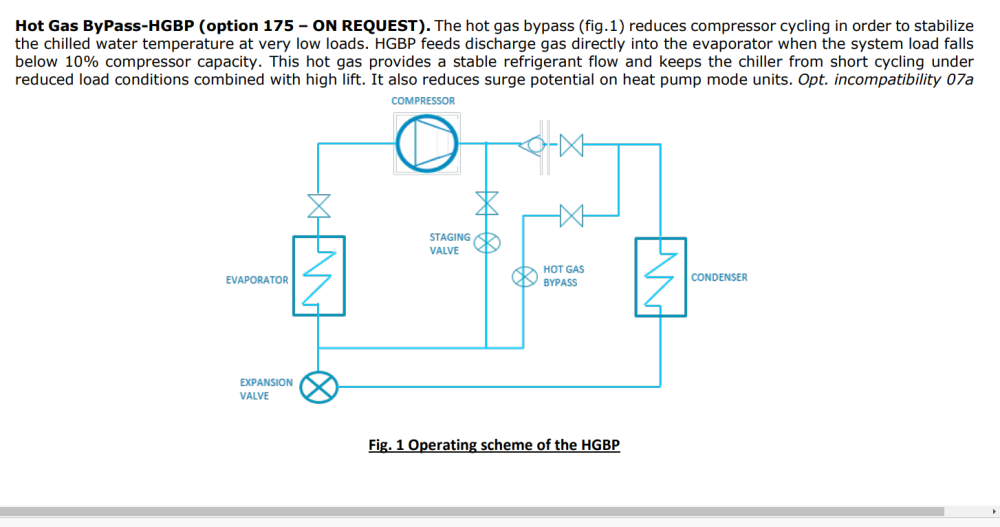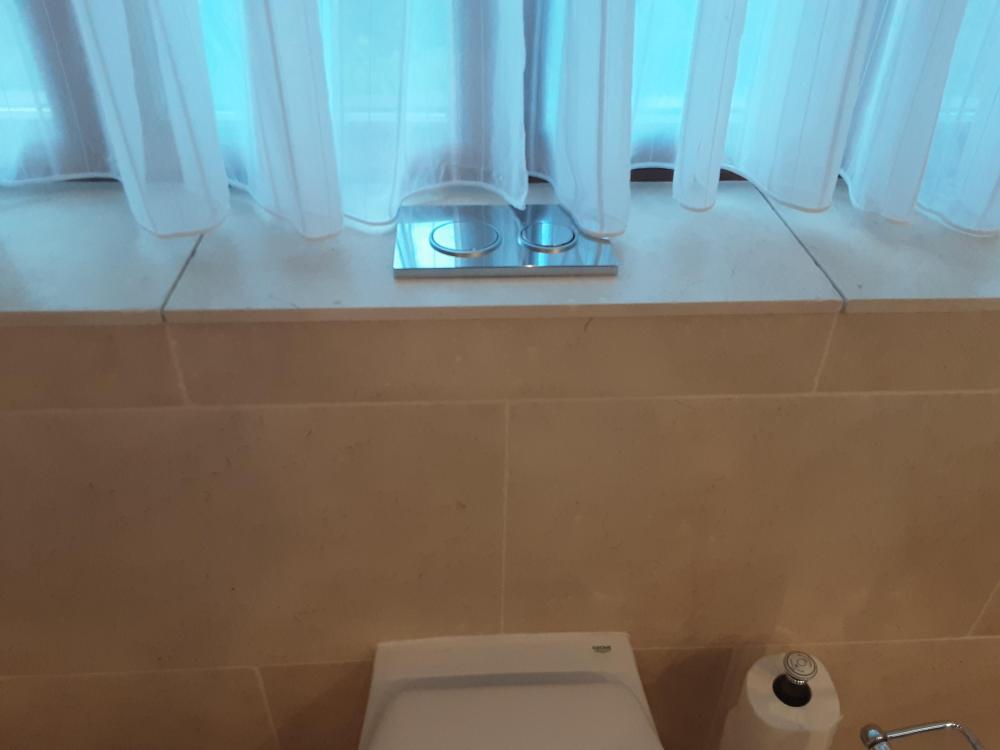Leaderboard
Popular Content
Showing content with the highest reputation on 07/24/23 in all areas
-
A long-overdue update on this in the hope it'll help others. In brief, in the previous months we've been escalating with NAPIT, the installer's professional body. To their credit, they've continued to engage and been useful. There have been a few rounds of engagement with the installer, which were unsuccessful. Ultimately, I have asked for an independent technical review (by NAPIT) of the design including the heat demand calculations and system design. They sent an assessor to us. The upshot was they upheld our concerns, and identified issues with: - assessment of heat demand - documentation (of all types including electrical certification and insurance-backed guarantee) - lack of evidence that the thermal store is appropriate ... (and if the installer can't provide this, they will expect the store to be removed and replaced with an alternative cylinder) - installation (e.g. no insulation to heat pump pipes, and not sleeving pipes through the walls) The installer continues to maintain that the issue is with us as users, that NAPIT are not independent (!) and that their system is more efficient than NAPIT realise. While they visited and did some remedial work, they have not done all actions required (there were at least 11) and NAPIT say they will apply sanctions to him if he does not fully deliver. It's all disappointing but useful to know that NAPIT are supportive and prepared to engage. We still have some way to go before it's fully resolved!2 points
-
I "grouted" the tiles on the side of the bath in Forever White silicone. There's removeable panels so on those edges and the fixing holes so I used silicone. The idea I can run a knife through it should I need to remove the panel ever. As I was there anywhere and fed up with tiling / grouting, I just carried on and grouted with silicone. This was 2019 and it still looks good. The Mapei grey silicone hasn't stood up nearly as well as the Forever White:2 points
-
So we have a posh oven with pyrolytic cleaning. Except last time we used that function, it slightly melted the internal plastic door lining, so I have lost confidence in that. Time to manually clean it. Now in all my 6 decades, I have never found an "oven cleaner" that easily removes oven residues. Forget what the adverts show you, I have yet to find one where you squirt it on, wait a bit, and wipe it clean in an effortless move to a lovely shiny oven (where is trading standards and trades description law on this?) Many moons ago I was dismantling to repair a cooker hood, covered in cooking grease, and by trial and error using all the chemical products in the house and garage, found white spirit particularly effective at disolving and removing the cooker hood grease. Worth a try on the oven? So yes I tried it, and it did indeed work WAY better than any oven cleaner at removing the baked on grease with not too much effort. Of course I now had an oven smelling of white spirit. Time to use the oven cleaner, that did at least seem effective at removing the last of the white spirit residue. Then time to try it. I ran it at a very low 60 degrees for about half an hour until all smells, of both white spirit and oven cleaner, had dispersed before putting it to full temperature and cooking my dinner. No obvious issues with said dinner and not a trace of white spirit or oven cleaner smell now. Off to get my tin hat as someone is bound to tell me how I narrowly missed killing myself or blowing up the house.1 point
-
Plus 1 for this. I’ve seen it many times too. It normally happens a week or so after the groundworkers have tracked next to your walls before cavity filling them. Also happens a day before you smash your shins on short standards a minute after the ladder guard has tried to throw you and your tools off the scaffold.1 point
-
Hi @Brickie, Sorry to be dumb, but would you mind explaining that in more detail. TIA, Alan1 point
-
So around 1.5m. If they built 24 courses from dpc 24 x 0.075m=1.8m,scaffold ledgers would normally go in a bit below that so that there’s a bit of work showing that you can plumb off. Starting to feel like Columbo. In all seriousness,I’ve come across this many times on sites-scaffolders often can’t be arsed to cut boards or tubes so they just force them in,walk away & to hell with the consequences.1 point
-
Right chaps, finally got around to moving the PRV to the incoming supply (it was wet on Saturday so indoor jobs a must) even at 2 bar (which I set it too fir the outside tap) shower flow is still very good and no more boiler hiccups and toilet filling quieter. Thanks guys 👍1 point
-
Yes, I used one on a previous garage floor (even smaller) and it gave a brilliant result (lucky perhaps) yes a beast to control but I found it quick to learn how to control. It’s not that bad In hindsight, rubbing a few areas with a concrete block then a coat of paint will be great. The garage “kit” is coming Friday so looking forward to building it.1 point
-
MCS guidance here, you will see they suggest a bigger HP can get away with a smaller cyl because of greater reheat capacity, not seen this on cyl mfrs web sites (try googling hot water tank sizing, you can choose any answer you like over a wide range!). Conversely if you are trying to minimise the HP size then a bigger tank will help avoid the need to reheat it when space heating is required. With the solar thermal as well you might be able to heat only at off-peak times. 3 sq m surface area will be fine with a 5-7 kW HP. Makes a lot of sense.1 point
-
http://www.gorenje.com/heating-systems/en/heat-pumps/heat-pumps-aerogor/bivalent-systems Humm I found some product fiche from Greece and the COP is lower than Keymark(correction it's the 55C only in the fiche) https://www.ambientclima.gr/wp-content/uploads/2022/11/common-energylabel-ae080bxydeg-eu-ecodesign.pdf https://www.ambientclima.gr/wp-content/uploads/2022/11/common-energylabel-ae120bxydeg-eu-ecodesign.pdf https://www.ambientclima.gr/wp-content/uploads/2022/11/common-energylabel-ae140bxydeg-eu-ecodesign.pdf The lowest output at 12C is 4kW for the 8 and 4.7kW for 12/14 due to the bigger evaporator1 point
-
The Samsung old EHS range does not have any hot gas bypass/EVI injection, it's pure compressor horse power. The new HT quiet borrowed tech from the big old commercial units, but the hot gas bypass on the Samsung we are talking about should not be confused with the original hot gas bypass and their function on the chillers that used them due to non inverter compressors. In Samsung it has a pressure protection role. On keymark site you can see some data with lower capacity temps, but not what you are looking for. https://keymark.eu/en/products/heatpumps/certified-products HT quiet 8kW1 point
-
1 point
-
That should work in your favour for getting something you like through, if there’s no strict street scene to adhere to.1 point
-
+1. if you like the plot then buy it and apply for planning for something you like. the existing planning will still remain if they refuse your new design anyway so you can either cut your loses and sell the plot with that planning or build the house as is and then flog that and move on.1 point
-
Part of the design process is to assess the ground strength. Then the SE calculates the weight and other loads of the building and what area of foundations will spread the load far enough that any settlement is trivial. For the 3 storey building that will require a larger area (perhaps 3 times as much) of foundations than for the single storey, unless the ground is very strong. It seems that they have added the single storey as if it was an extension, rather than lined through. But it still shouldn't separate and move differentially. Your inspector would know all of that, if he has any expertise, or even has been paying attention. Perhaps others on here know if NHBC are to be relied on. I'm not from a housing background. I do know though that the big developers do not regard themselves as builders, and leave all that stuff to others. The 'others' may, or may not, have included an SE. Or they may just have built to typical details (seriously that happens). No you are not wasting your time. Every process starts somewhere, and you have it on record that they have made an inspection and agreed that there is shrinkage damage. I wonder if this is something you should advise to your house insurer. They may send an independent expert and pick this argument up for you, with more clout, rather than paying to fix it. Or perhaps they'll say not to worry, and you can accept that. It's up to you if you want to take it further, or hope it goes away.1 point
-
Yeah but the point is you must answer the questions honestly, or they can invalidate any claim, whatever the circumstances. if they don’t ask it’s fine, but any questions asked must be answered honestly1 point
-
I could see that if the subsiding building collapsed on your contents and you tried claiming for that but otherwise why? They are insuring the contents not the building. Did they specifically ask "does the building have subsidence" or was it a little detail you told them without being prompted thinking you were being helpful?1 point
-
That’s not a good idea, in the event of a claim if they find out they’ll invalidate the claim and you get black listed or done for fraud.1 point
-
TP600 (in two different thicknesses, for upstairs retrofit and downstairs new install), FM330 (12 cans, I'll use it somewhere else, I'm sure) and ME508 (in two widths) ordered....1 point
-
Ah mis read Thought it was an escape route in a standard house1 point
-
And as an ex-EPC assessor that's precisely why an EPCbefore sale is utterly pointless as nobody can be bothered improving efficiency when there's a new kitchen to fit or a drive to blockpave. Things may have changed in the last few years but when I was doing EPCs early on in the scheme it was a complete waste of a sellers money. I'd hope buyers now take at least a bit of notice of the ratings and how easy/hard it would be to improve.1 point
-
If you have external doors to the kitchen and fire escape windows on the first floor you should be fine.1 point
-
Rubbish. It's not a habitable room. Look at the definition in Approved Document B. In any case if this were the case every single room on the ground and first floors in all houses all over the country would need EEWs. Go back to him and ask him for a definition of a habitable room/space. EDIT: I have just looked at your floor plan. The Living Room is the inner room (to the first floor bedrooms which I am presuming if this is a new house all have EEs) - not the porch.1 point
-
This has not been my experience with the Claber system. In fact, quite the opposite. They use Push fit pipes, like most systems, but I actually find it quite stiff to put on. Doable with no tools required, but some hand strength. Once on, so difficult to get off that is easier to sacrifice a cm or so if pipe and cut the fitting off.1 point
-
Paving - reduce chance of accidental damage to the roof covering. Will also reduce sound transmission. Assume you think planning will be ok with an overlooking balcony? Some LAs despise them.1 point
-
The rising energy costs have made people more aware of their energy usage so they might well start to look at the EPC rating of houses as key metric in their buying decisions. The market itself might therefore determine the value of the property based on the EPC rating. The days of cheap energy are likely behind us.1 point
-
This has been coming down the tracks for some time, first for rental properties and now for sale. It has been blatantly obvious to me for years, that a house with a poor EPC should be worth less than a house with a good EPC. But that does not yet appear to be the case. You still hear of people buying an old house with a poor EPC because it has "character" and then complain the first winter at how much it costs to heat, information clearly available in the EPC. It is nearly 10 years since we decided to build our second self build, and it was obvious even then, that the only logical thing to do was aim for as close to passive house as I could, and I ended up with a house with an EPC rating of A94. Our BCO even admitted it was the first A rated house he had seen. That in itself is shocking. But I do feel sorry if people are not even able to sell a house even at a reduced price, unless the work is done first to upgrade it. Preventing sale of assets is for me one step too far for any government in any country. But it will be another nail in the SNP coffin which must nearly be shut by now.1 point
-
Just had a look at the heat pump guide by MCS. And found this (third option was for a combined system). 5.2. Heat Pump System Type Options • Space Heating Only The heat pump provides heat only to heat the space. Domestic hot water for sanitary purposes (if required) is provided by a separate system which may or may not be another heat pump. • Domestic Hot Water Only This heat pump is dedicated to heat up domestic hot water. Any space heating requirement is supplied by alternative means. This can be a popular solution on large projects such as multi residential apartments when services are centralised e.g. heat network systems. So using this available configuration may be away around not changing your existing cylinder. Say you heat on E7 and don't want to change - ask them to add a 3 way valve (and wiring) just in case you change your cylinder at a later date. Get your MCS ticket, get a plumber in and pipe up the cylinder how you want.1 point
-
Grant and CoolEnergy can be interfaced quite easily to an existing S-Plan system as they accept external contact closures as inputs. But they are both R32 and I would prefer R290, Grant are bringing one out next year (also made by Chofu).1 point
-
1 point
-
Yup. https://www.toolstation.com/ultraplan-renovation-screed-3240/p21200?store=W8&utm_source=googleshopping&utm_medium=feed&utm_campaign=googleshoppingfeed&mkwid=_dc&pcrid=&pkw=&pmt=&gclid=Cj0KCQjwn_OlBhDhARIsAG2y6zP8Eth81NL8telHABW4sOvuyIt1UaPgFYztFETuqpdHb7pIDWkWSf8aAuDhEALw_wcB&gclsrc=aw.ds Just use this to smooth the transition. You'll never notice this, and the only time it'll be a problem is when you stand there considering it, long after all works are complete. Smooth it out with some of that screed, removing the protective cover and priming first, and it'll be done and dusted.1 point
-
What is "it"? The grout or the tiles? Silicone injected between the tiles will be an absolute nightmare to remove!1 point
-
Does the whole floor slope? Is it like a short ramp between two level areas? A hollow, so down and up again? One option might be to find a thin underlay and use carpet tape to stick layers together where the transition is.. ---- -------- ------------- Otherwise perhaps board over the room where its flat and use a self levelling compound intended for wood floors in the sloping area.1 point
-
Not as simple as that, it’s actually a very big hole, so mid size excavator, lots of spoil to take away, gravel or concrete base, install tank, gravel or concrete surrounding. that’s just the tank, it then has to discharge somewhere, either a ditch or you need a drainage field. so loads more digging and drains and gravel. I did mine myself and I think the quotes I had were fair. good ground and a ditch to discharge to will remove a lot of cost.1 point
-
This will keep the weeds down. Concrete pour tomorrow then relax again. IMG_0281.MOV1 point
-
We used a Beam C90 MVHR system supplied and all fully installed and commissioned for just over £5k, just before xmas. It covered a total floor area of 264sqm and used exposed galvanised steel ducting (as shown in the pic) because we wanted the industrial look plus it was all retrofit. They did an amazing job and worked till late each day getting the job done. It's really quiet and we get no condensation anymore and we also have no heating upstairs so any warmth generated downstairs is distributed throughout the house. Definitely recommend the system and company https://www.rbcentralsystems.co.uk/ who installed and commissioned it.1 point
-
To be clear: I'm not trying to argue you should rip out the functioning boiler and put in and ASHP. My point was that's what the previous few posts seemed to incorrectly assume you already had done. If you're going to install anything, I'd recommend an air to air heat pump aka air-conditioning unit in the specific room(a) that need it1 point
-
0 points
-
I'd say all the "cheaper" ones have simple contact-closure inputs and only need their own controller for flow setpoint etc. Heck some even have that controller on the outdoor unit. All @Beelbeebub needs to do is man up and order a containerload of his choice direct from the chinaman and presto! 30 cheap and easy heatpumps...0 points
-
0 points




















